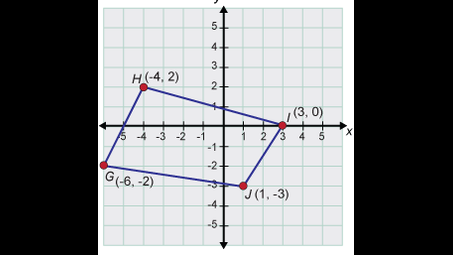What else can I help you with?
Can congruent angles determine if there is a parallelogram?
If both pairs of opposite angles of a quadrilateral are congruent, then it is a parallelogram.
Is the quadrilateral a parallelogram?
To determine if a quadrilateral is a parallelogram, you can check if either pair of opposite sides is parallel and equal in length, or if the diagonals bisect each other. Additionally, if both pairs of opposite angles are equal, or if one pair of opposite sides is both parallel and equal in length, then the quadrilateral is a parallelogram. If any of these conditions are met, you can confidently classify the quadrilateral as a parallelogram.
Is this statement true or falseThere is not enough information to determine whether the quadrilateral shown is a parallelogram?
true
What measure of a will make this quadrillateral a parallelogram?
To determine if a quadrilateral is a parallelogram, you need to show that either pairs of opposite sides are equal in length, or that pairs of opposite angles are equal, or that the diagonals bisect each other. Alternatively, if both pairs of opposite sides are parallel, it also confirms that the quadrilateral is a parallelogram. Any one of these conditions is sufficient to classify the quadrilateral as a parallelogram.
What can determine if a quadrilateral is a parallelogram?
There are many different ways but a defining characteristic is that is has two pairs of parallel sides.
What measure of will make this quadrilateral a parallelogram 10x-23 7x plus 1?
To determine if the given quadrilateral (10x - 23) and (7x + 1) can be a parallelogram, we need to set the opposite sides equal to each other, as the opposite sides of a parallelogram are equal. Thus, we set (10x - 23 = 7x + 1). Solving this equation will give us the value of (x) that makes the quadrilateral a parallelogram. After simplifying, we find that (3x = 24), which means (x = 8).
What value of x guarantees that the quadrilateral is a parallelogram?
To determine the value of ( x ) that guarantees a quadrilateral is a parallelogram, you need to use the properties of parallelograms, which state that opposite sides are equal in length or that opposite angles are equal. For example, if two sides of the quadrilateral are expressed in terms of ( x ) and set equal to each other, you can solve for ( x ). Alternatively, if the angles are given in terms of ( x ), you can set the sum of opposite angles equal to each other to find ( x ).
In parallelogram ABCD AC is congruent to BD. determine whether the parallelogram is a rectangle?
Yes, it is.
What is the parallelogram of 80 square meter?
The area of a parallelogram is not enough information to determine its shape.
What are the dimensions of a 784 sq in parallelogram?
The area of a parallelogram does not provide enough information to determine its dimensions.
How do you use the distance formula and slope formula to classify a quadrilateral?
To classify a quadrilateral using the distance formula and slope formula, first calculate the lengths of all four sides using the distance formula, which is given by ( d = \sqrt{(x_2 - x_1)^2 + (y_2 - y_1)^2} ). Next, determine the slopes of the sides using the slope formula ( m = \frac{y_2 - y_1}{x_2 - x_1} ). If the lengths of opposite sides are equal, the quadrilateral may be a parallelogram, and if the slopes of opposite sides are equal, it could be a rectangle or a rhombus based on the side lengths. Analyzing these properties will help classify the quadrilateral as a trapezoid, parallelogram, rectangle, rhombus, or square.
What are the dimesions of a parallelogram that has an area of 24 cm and a perimeter of 22cm?
The area and perimeter of a parallelogram are not sufficient to determine its dimensions.

